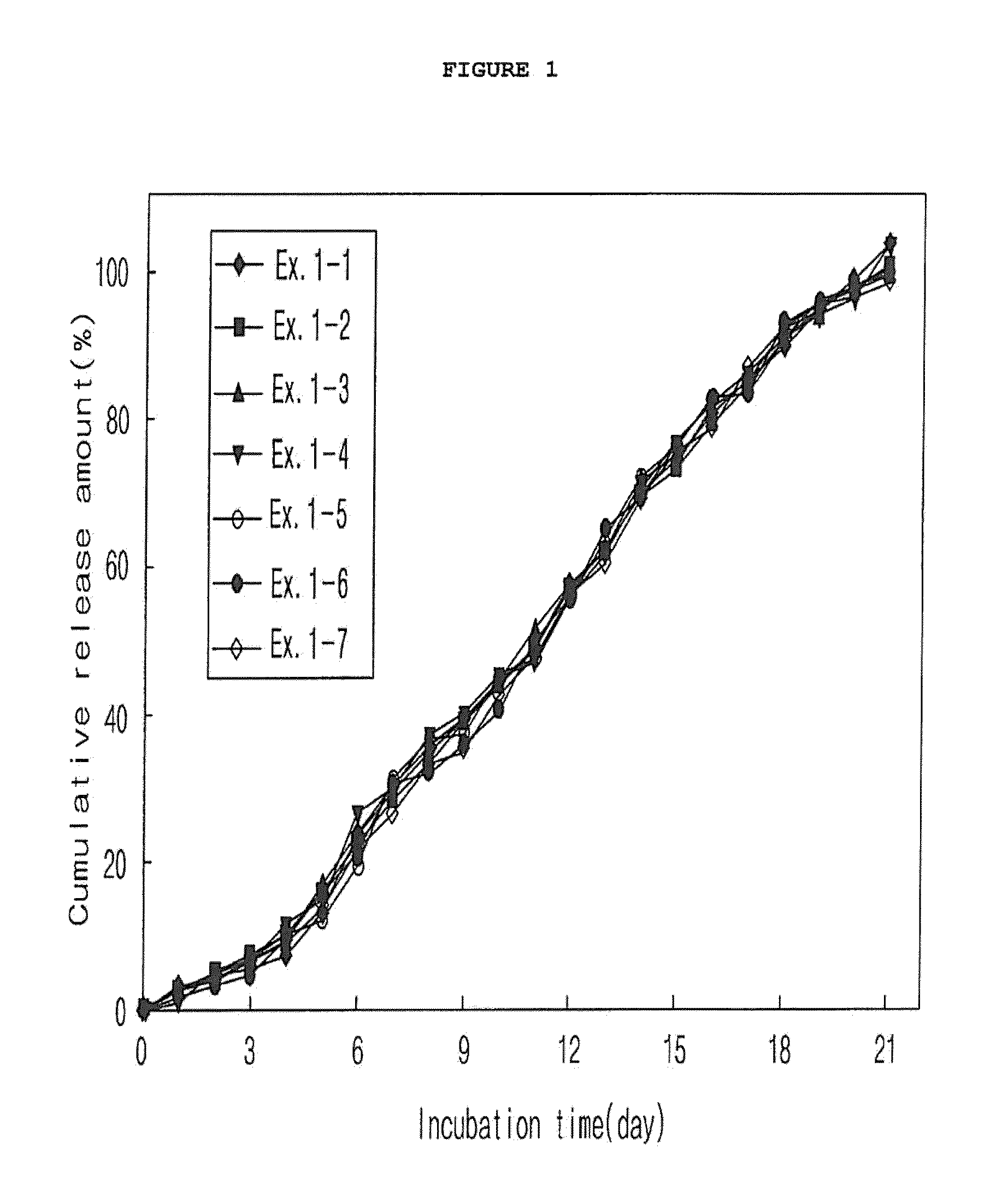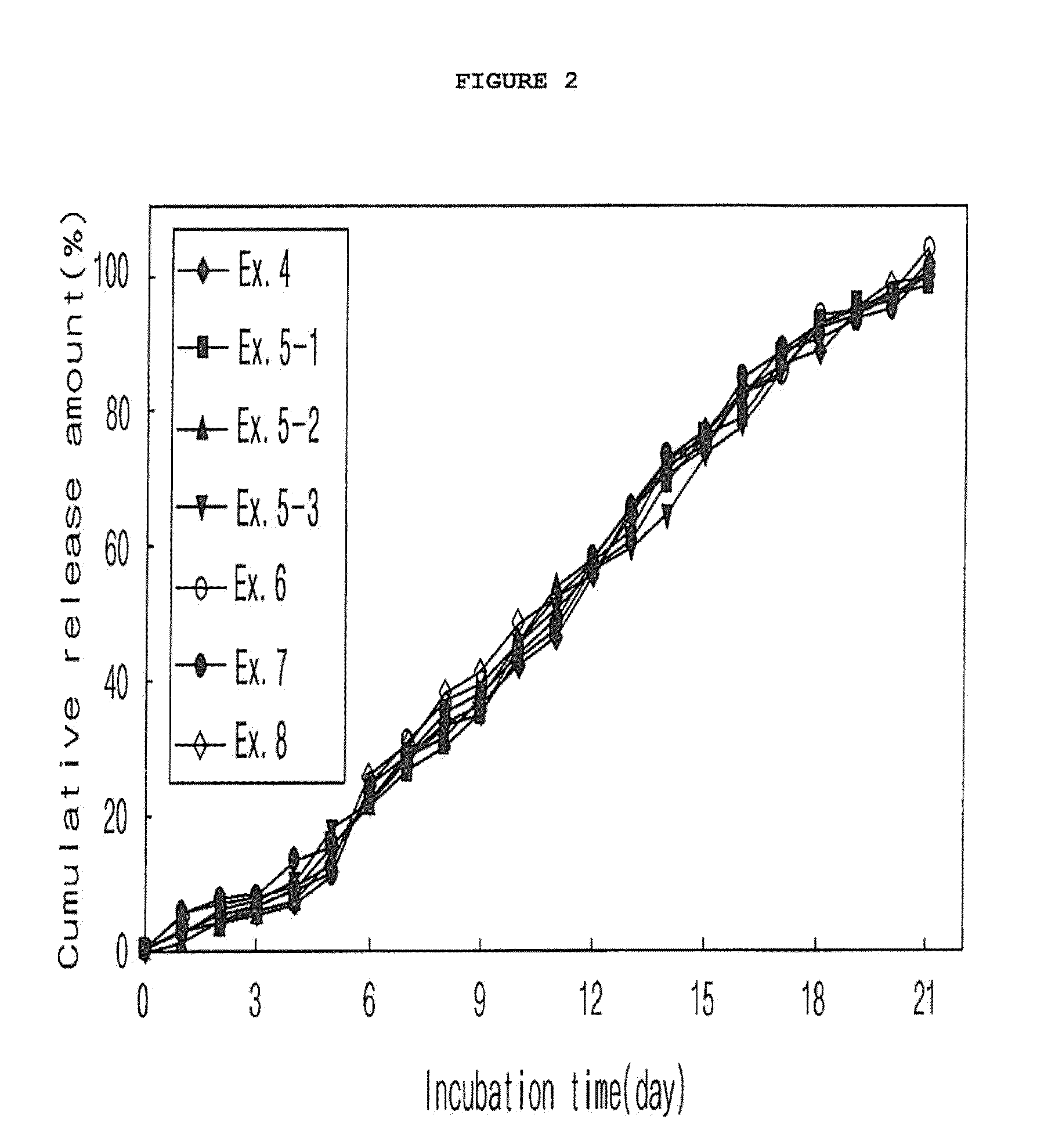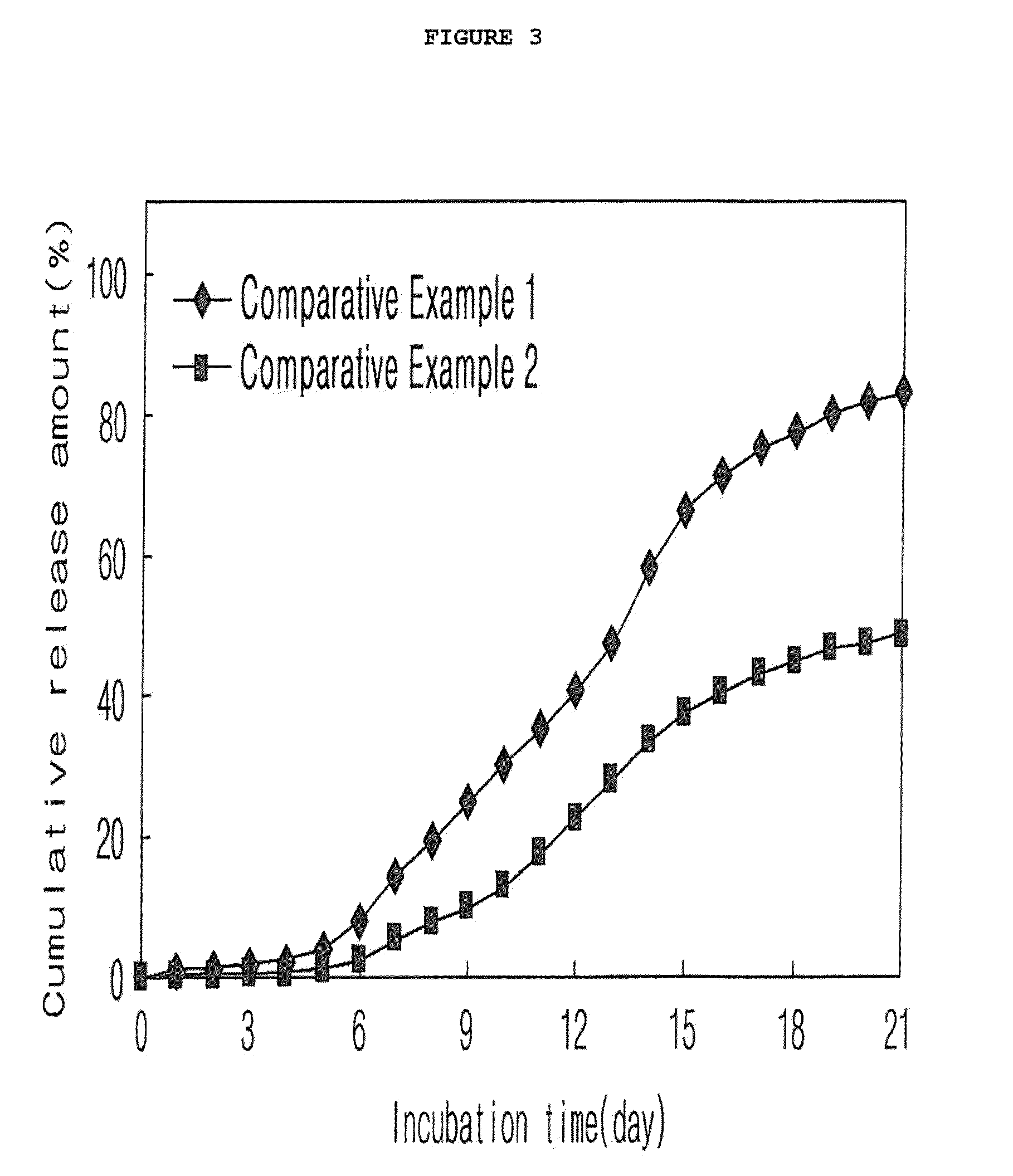Method for preparing a biodegradable polymer microsphere containing a glucose-regulating peptide
a biodegradable, polymer technology, applied in the direction of peptides, drug compositions, metabolic disorders, etc., can solve the problems of long time-consuming and laborious administration of peptide drugs, short half-life of peptide drugs, low bioavailability in the body, etc., to achieve high stability of encapsulated drugs, simple and economically advantageous effects
- Summary
- Abstract
- Description
- Claims
- Application Information
AI Technical Summary
Benefits of technology
Problems solved by technology
Method used
Image
Examples
example 1
Preparation of Microspheres According to Kinds of Polymers and Mixture Ratios (O / W Emulsion)
[0063]300 mg of a polymer (Boehringer Ingelheim) was completely dissolved in methylene chloride. In this polymer solution, 9 mg of exendin-4 (American Peptide) was dispersed to give an exendin-4 dispersion. The polymer that was used, as listed in Table 1, was one polymer product or a mixture of two different polymer products in various mixture ratios. To each of the drug dispersions which were different in polymer kind and mixture ratio, methyl alcohol was added in a predetermined amount (alcohol:drug dispersion 1:4 v / v) to give drug-dispersed solutions. 10 ml of each of the drug-dispersed solutions was emulsified with 250 ml of a methylene chloride-saturated polyvinylalcohol 1% aqueous solution (w / v) using a stirrer or a homogenizer to form microspheres. While the methylene chloride was allowed to slowly evaporate in air by stirring at room temperature for several hours under atmospheric pre...
example 2
Preparation of Microspheres According to Ratios of Alcohol to Drug Dispersion (O / W Emulsion)
[0065]300 mg of a polymer (RG502B, Boehringer Ingelheim) was completely dissolved in methylene chloride. In this polymer solution, 9 mg of exendin-4 (American Peptide) was dispersed to give an exendin-4 dispersion. To the drug dispersion were added predetermined amounts of methyl alcohol (alcohol:drug dispersion: 1:1-1:7 v / v), as shown in Table 2, to give drug-dispersed solutions. They were emulsified and dried in the same manner as in Example 1 to afford microspheres.
[0066]
TABLE 2MeOHExendin-4 DispersionStates ofExamples(Vol)(Vol)Drug-Dispersed Solution2-111Solution2-22Solution2-33Solution1-14Solution2-45Solution2-56Solution2-67Dispersion
[0067]As shown in Table 2, a solution was not formed when the volume ratio of the drug dispersion to methyl alcohol was 7 or greater.
example 3
Preparation of Microspheres from Drug-Dispersed Solution Containing Additive (O / W Emulsion)
[0068]Microspheres were prepared in the same manner as in Example 1-1, with the exception that various additives were mixed in an amount of 0.1 or 12.5 vol % of the solvent with the drug-dispersed solution. In Table 3, the additives and their vol % mixed with the solution are summarized.
[0069]
TABLE 3Exendin-4PolymerMixingExamples(mg)(mg)Additives0.1%12.5%3-19300Solutol HS-15∘∘3-2TPGS∘∘3-3Gelucire∘∘3-4Labrafil∘∘3-5Labrasol∘∘3-6Medium Chain∘∘Triglyceride3-7Lecithin∘∘3-8N-Methyl pyrrolidone∘∘3-9Polyvinyl pyrrolidone∘∘3-10Hydropropyl∘∘methylcellulose3-11Tween∘∘3-12Span∘∘3-13Cremophor∘∘3-14Poloxamer∘∘3-15Brij∘∘3-16Sunsoft 818H∘∘
[0070]As shown in FIG. 3, various additives in a broad concentration range can be mixed with the drug-dispersed solution.
PUM
 Login to View More
Login to View More Abstract
Description
Claims
Application Information
 Login to View More
Login to View More - R&D
- Intellectual Property
- Life Sciences
- Materials
- Tech Scout
- Unparalleled Data Quality
- Higher Quality Content
- 60% Fewer Hallucinations
Browse by: Latest US Patents, China's latest patents, Technical Efficacy Thesaurus, Application Domain, Technology Topic, Popular Technical Reports.
© 2025 PatSnap. All rights reserved.Legal|Privacy policy|Modern Slavery Act Transparency Statement|Sitemap|About US| Contact US: help@patsnap.com



